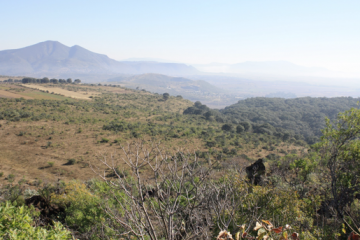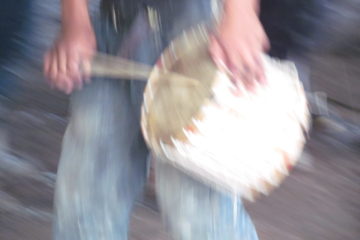
Lamya KHALIDI
Former Fyssen 2014
FR : Dans une étude publiée dans Quaternary Science Reviews, une collaboration pluridisciplinaire archéologie-géosciences, impliquant des équipes françaises et éthiopiennes, menée par Lamya Khalidi, chercheuse au CNRS (CEPAM, Université Côte d’Azur) a conduit à la description de la première séquence d’occupation humaine holocène (de 11000 à 3300 avant le présent) et la découverte des premiers sites de pasteurs potiers connus dans l’Afar éthiopien. En s’appuyant sur l’étude de 7 sites archéologiques récemment découverts dans le bassin du paléolac Abhé, cette équipe du CEPAM, Géoazur, le Centre Français des Etudes Ethiopiennes (CFEE), TRACES, MNHN, IPGS-EOST, Palévoprim et de l’Authority for Research and Conservation of Cultural Heritage (ARCCH) éthiopien a mené une reconstitution des fluctuations du niveau du lac Abhé en lien avec les stratégies d’occupation humaine par la corrélation de nouvelles données archéologiques et géomorphologiques et 37 nouvelles dates C14. Sur une période de 9000 ans, les sites couvrent deux grandes transitions humide-aride de la période humide africaine (AHP) au cours desquelles le niveau du lac Abhé a varié de plus que 5000 km2, et des chasseurs-cueilleurs ce sont tournés vers l’élevage. Cette étude révèle que l’établissement d’économies mixtes répondait principalement aux conditions environnementales très fluctuantes dans l’une des régions les plus arides du monde.
ENG: In a study published in Quaternary Science Reviews, a multidisciplinary archaeology-geoscience collaboration involving French and Ethiopian teams led by Lamya Khalidi, a researcher at the CNRS (CEPAM, University Côte d’Azur), has led to the description of the first Holocene human occupation sequence (from 11000 to 3300 before the present) and the discovery of the first known potter-pastoral sites in the Ethiopian Afar. Based on the study of 7 recently discovered archaeological sites in the Abhe paleolake basin, this team from the CEPAM, Geoazur, the French Center for Ethiopian Studies (CFEE), TRACES, MNHN, IPGS-EOST, Palévoprim and the Ethiopian Authority for Research and Conservation of Cultural Heritage (ARCCH) has carried out a reconstruction of the fluctuations of the level of Lake Abhe in relation to human occupation strategies by correlating new archaeological and geomorphological data and 37 new C14 dates. Over a period of 9000 years, the sites cover two major humid-arid transitions of the African Humid Period (AHP) during which the water level of Lake Abhe varied by more than 5000 km2 and hunter-gatherers turned to herding. This study reveals that the establishment of mixed economies was mainly in response to highly fluctuating environmental conditions in one of the world’s most arid regions.
9000 years of human lakeside adaptation in the Ethiopian Afar: Fisher-foragers and the first pastoralists in the Lake Abhe basin during the African Humid Period.
Lamya Khalidi, Carlo Mologni, Clément Ménard, Lucie Coudert, Marzia Gabriele, Gourguen Davtian, Jessie Cauliez, Joséphine Lesur, Laurent Bruxelles, Lorène Chesnaux, Blade Engda Redae, Emily Hainsworth, Cécile Doubre, Marie Revel, Mathieu Schuster, Antoine Zazzo.
Quaternary Science Reviews 243 (2020) 106459. Accepted 26 June 2020. https://doi.org/10.1016/j.quascirev.2020.106459
Pour télécharger l’article gratuitement, suivez le lien:
https://authors.elsevier.com/a/1bVBc-4PRxn1K
To download the article for free, follow the link below:
https://authors.elsevier.com/a/1bVBc-4PRxn1K
 FR : Lamya Khalidi est chercheuse au CNRS dans le laboratoire d’archéologie du CEPAM à Nice. Diplômée de l’université de Cambridge, elle a 25 ans d’expérience dans l’archéologie du Moyen-Orient et de l’Afrique et dirige actuellement un projet de terrain en Éthiopie. Ses recherches interrogent les interactions « sociétés-milieux » dans le contexte du développement des premières sociétés de production, principalement durant les périodes de néolithisation et de l’établissement des premières sociétés proto-urbaines, au Moyen Orient et dans la Corne de l’Afrique. Ses recherches portent notamment sur la circulation des obsidiennes pour étudier les dynamiques de mobilité, de contact et d’échange dans la Corne de l’Afrique et la péninsule arabique et les liens qui existaient entre ces régions, le Moyen-Orient et l’Afrique du Nord. Elle a bénéficié d’une Subvention de recherche de la Fondation Fyssen pour son travail en Éthiopie de 2015 à 2016.
FR : Lamya Khalidi est chercheuse au CNRS dans le laboratoire d’archéologie du CEPAM à Nice. Diplômée de l’université de Cambridge, elle a 25 ans d’expérience dans l’archéologie du Moyen-Orient et de l’Afrique et dirige actuellement un projet de terrain en Éthiopie. Ses recherches interrogent les interactions « sociétés-milieux » dans le contexte du développement des premières sociétés de production, principalement durant les périodes de néolithisation et de l’établissement des premières sociétés proto-urbaines, au Moyen Orient et dans la Corne de l’Afrique. Ses recherches portent notamment sur la circulation des obsidiennes pour étudier les dynamiques de mobilité, de contact et d’échange dans la Corne de l’Afrique et la péninsule arabique et les liens qui existaient entre ces régions, le Moyen-Orient et l’Afrique du Nord. Elle a bénéficié d’une Subvention de recherche de la Fondation Fyssen pour son travail en Éthiopie de 2015 à 2016.
ENG: Lamya Khalidi is a researcher in archaeology with the French CNRS at the CEPAM laboratory in Nice. A Cambridge University graduate, she has 25 years of experience in Middle East and African archaeology and currently leads a fieldwork project in Ethiopia. Her research examines human-landscape interactions in the context of the development of the first production societies, principally during periods of Neolithization and of the establishment of the first proto-urban societies in the Middle East and in the Horn of Africa. Her research focuses particularly on fingerprinting obsidian circulation to study the dynamics of mobility, contact and exchange in the African Horn and the Arabian Peninsula and the links that existed between these regions, the Middle East and North Africa. She benefitted from a Fyssen Foundation research grant for her work in Ethiopia from 2015-2016.
Photo : Lamya Khalidi et Carlo Mologni, les principaux auteurs de l’étude, échantillonnent un site daté à 10000 avant le présent (Raso-02) dans l’Afar éthiopien. © E. Soteras, TelluS-Rift.


